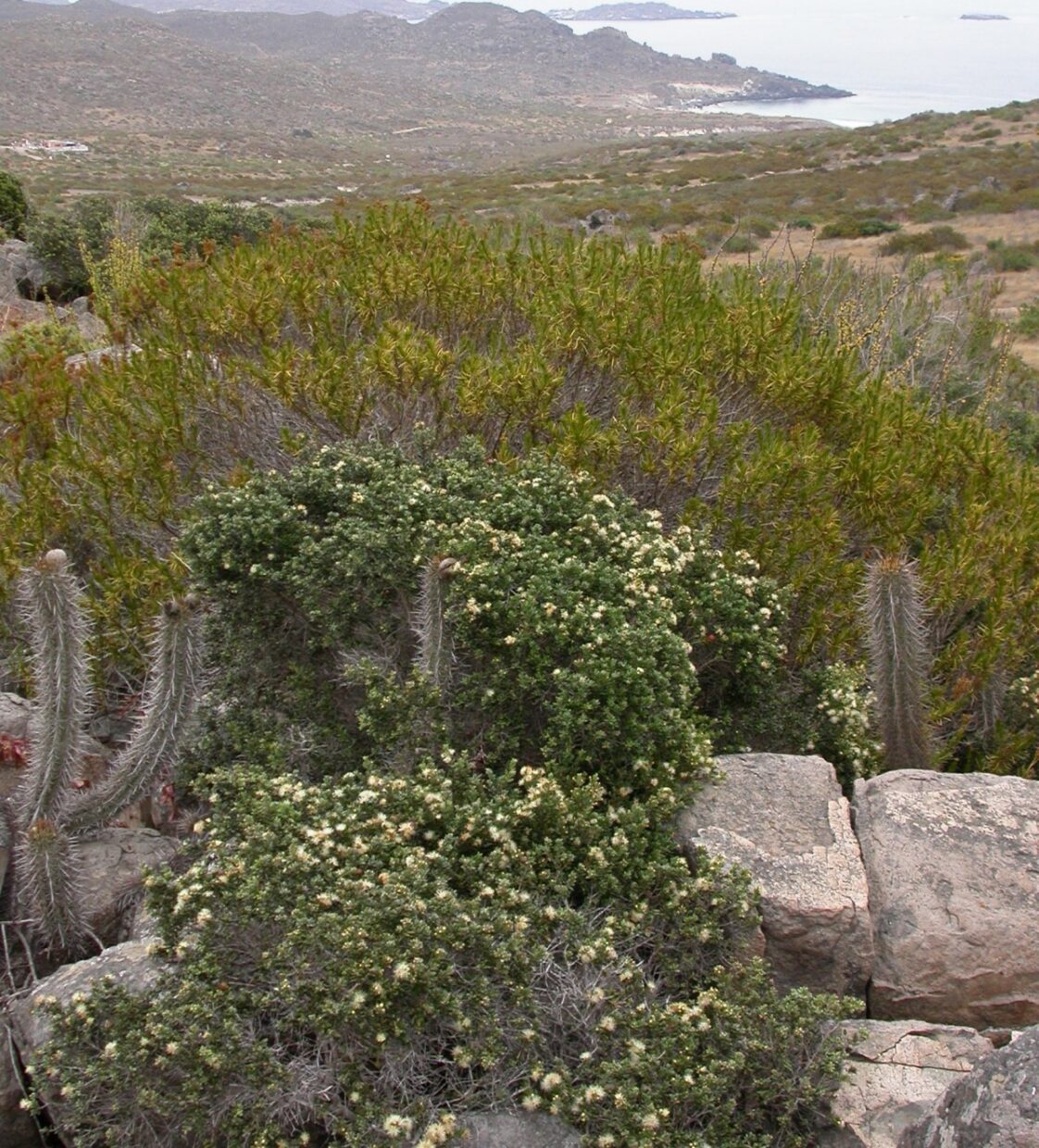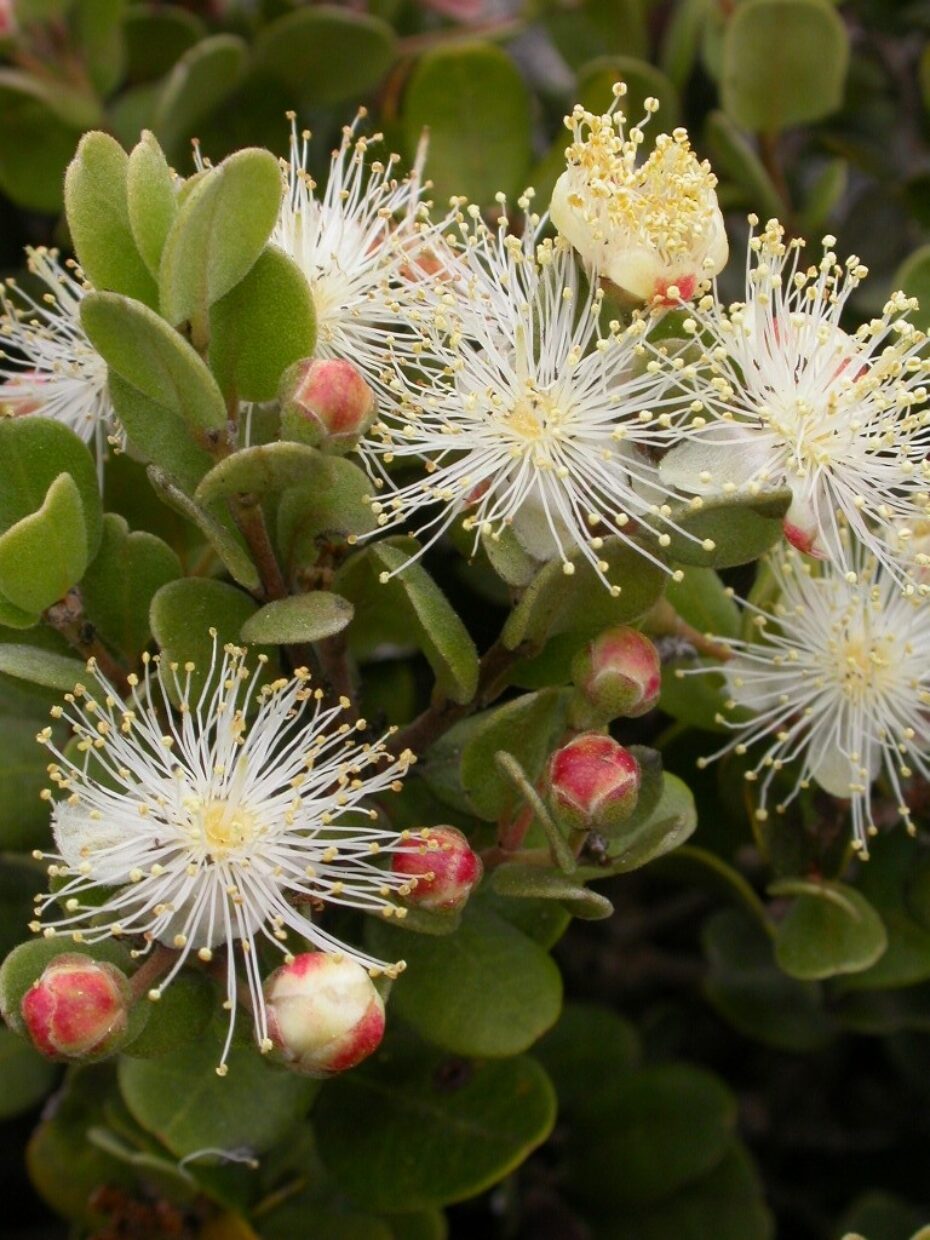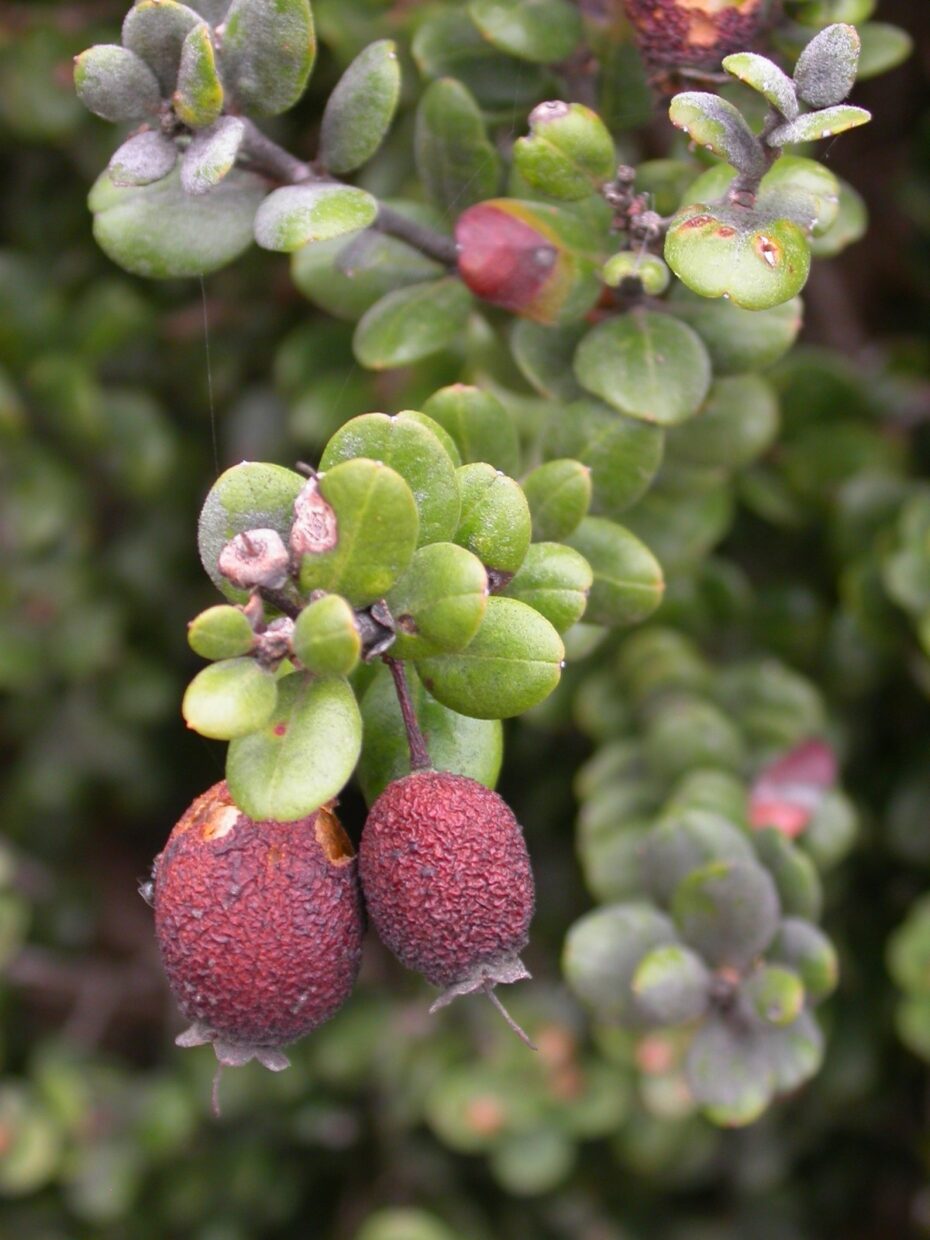Place of Publication
Brittonia 40(3): 290 (1988)
Type citation
Type based on Myrtus coquimbensis Barnéoud. Chile. Coquimbo, “orilla del mar” Gay s.n. [Lectotype, P. designated by Landrum and Grifo, 1988; islolectotype, F-fragment; photo of lectotype SGO-4478]
Synonyms
- Aspidogenia coquimbensis (Barnéoud) Burret
- Myrtus coquimbensis Barnéoud
- Reichea coquimbensis (Barnéoud) Kausel
Common names
- arrayán (Muñoz-Pizarro (1966))
- lucumillo (Muñoz-Pizarro (1966))
- lucumilla (Muñoz-Pizarro (1966))
References
-
Serra et al. (1986b)
Serra, M.T. , Gajardo, R. and Cabello, A. 1986. Reichea coquimbensis (Barn.) Kausel. Programa de protección y recuperación de la flora nativa de Chile. Ficha Técnica de especies amenazadas. Corporación Nacional Forestal.
-
Landrum (1988)
Landrum, L R 1988. The Myrtle Family (Myrtaceae) in Chile. Proceedings of the California Academy of Sciences 45(12):277-317
-
Landrum & Grifo (1988)
Landrum, L.R. and Grifo, F.T. 1988. Myrcianthes (Myrtaceae) in Chle. Brittonia 40(3):290-293
-
Hechenleitner et al. (2005)
Hechenleitner, P. , Gardner, M.F. , Thomas, P.I. , Echeverría, C , Escobar, B. , Brownless, P. and Martínez A., C. 2005. Plantas amenazadas del centro-sur de Chile: distribución, conservación y propagación, 1a edición. Valdivia: Trama Impresores S.A
-
Saldías & Velozo (2012)
Saldías, G. and Velozo, J. 2012. Distribución geográfica y estado de las poblaciones de Myrcianthes coquimbensis (Myrtaceae), especie endémica de Chile, en peligro de extinción. Chloris Chilensis Año 15 No. 2
Iconography
- Landrum (1988): fig. 1C,D
- Hechenleitner et al. (2005): p. 90
Regions
Distribution and habitat
Myrcianthes coquimbensis has a narrow coastal distribution in Region Coquimbo (province La Higuera, 29’28°S to province Coquimbo, 30°12’S). It grows only among large granite boulders on coastal slopes that receive almost constant cool moist breezes from the Pacific Ocean. It is often associated with Bridgesia incisifolia, Centaurea chilensis, Fuchsia lycioides, Llagunoa glandulosa, Ophryosporus triangularis, Oxalis gigantea and Proustia ilicifolia (Hechenleitner, 2005).
Distribution
-
Myrcianthes coquimbensis (Barnéoud) Landrum & Grifo
-
-
Myrcianthes coquimbensis (Barnéoud) Landrum & Grifo
-
-
Myrcianthes coquimbensis (Barnéoud) Landrum & Grifo
-
-
Myrcianthes coquimbensis (Barnéoud) Landrum & Grifo
-
-
Myrcianthes coquimbensis (Barnéoud) Landrum & Grifo
-
-
Myrcianthes coquimbensis (Barnéoud) Landrum & Grifo
-
-
Myrcianthes coquimbensis (Barnéoud) Landrum & Grifo
Here is #map_1 -
-
-
-
-
-
Conservation status
- Endangered EN B1ab(iii); B2ab(iii); C1 (Hechenleitner et al. (2005))
Descriptions
- Landrum (1988)
- Landrum & Grifo (1988)
Habit
Dense, rounded, evergreen shrub up to c. 1.5 m tall. Flowering from November to December. Fruits mature from May to September.
Key characteristics
Easily distinguished from all other Chilean myrtle species by a combination of its flowers having 5 petals, 5 sepals and strongly coriaceous leaves which have revolute margins.








